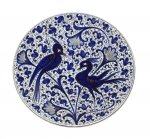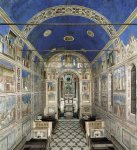accueil site > Paysage et patrimoine > 11. Erasmus+ Partnership > 07. European roads of the Blue > Roads of the Blue in Ravenna
- 01. Fiches pédagogiques
- 01. Teaching materials
-
02. Jardin sans frontière : une école pour développer les compétences -clés en Europe
- 04. Partenaires
- 05. Rencontres transnationales
- 14. À l’école du jardin. Mobilités de formation dans les jardins d’Europe
- 15. À l’école européenne du jardin. Paroles de formateurs sur leurs formations "entre pairs"
- 16. A l’école auropéenne du jardin. Paroles d’apprenants sur leurs mobilités Erasmus+
- 19. Petit glossaire "européen" du jardin
- 20. Dissémination
- 21. Exploitation locale du projet
- 03. Un nouvel Erasmus+ : Le bleu européen comme étendard contre l’exclusion des adultes
-
09. Erasmus+ partenariato
-
Cammini del Blu in Europa
- 01. Incontri transnazionali
- 05. Progetti blu di partners
- 10. Percorsi europei del Blu
- 20. Storie blu
- 40. Disseminazione
- 43. Transcultural Carpet Blue
- 45. Missive blu
- 46. Glossario blu
- 47. Schede didattiche "Pedagogia del colore blu in Europa"
- 48. Illustrazioni delle schede didattiche : Mostra delle opere degli studenti
-
Giardino senza frontiere. Una scuola per lo slivuppo di competenze chiave in Europa
- 04. Partners
- 05. Riunioni transnazionali
- 14. Alla scuola del giardino. Mobilità di formazione nei giardini d’Europa
- 15. Alla scuola del Giardino. Parole di formatori sul loro addestramento "tra pari"
- 16. Alla scuola del giardino. Parole dei discenti sul loro Erasmus + Mobilità
- 19. Piccolo glossario europeo del giardino
-
Cammini del Blu in Europa
-
11. Erasmus+ Partnership
- 01. Transnational Meetings
- 05. Blue Projects of partners
- 07. European roads of the Blue
- 10. Blue stories
- 40. Dissemination
- 43. Transcultural Carpet Blue
- 45. Blue Missives
- 46. Blue Glossary
- 48. Roads of the blue : the file
- 50. Illustrations of the pedagogic file : exhibition of works of learners
-
51. Garden Without Borders : A School for Developing Key Competences in Europe
- 04. Partners
- 05. Transnational meetings
- 14. At Garden School. Training mobilities in the gardens of Europe
- 15. At Garden School. Words of trainers on their "peer-to-peer" training
- 16. At Garden School. Learners’ words about their mobility Erasmus +
- 19. Small European glossary of the garden
- 20. Dissemination
-
11. Partenariats Erasmus+
-
01. Les chemins du bleu en Europe
- 01. Rencontres transnationales
- 05. Projets bleus des partenaires
- 10. Routes du Bleu en Europe ...
- 20. Histoires Bleues
- 40. Dissémination
- 43. Transcultural Carpet Blue
- 45. Missives bleues
- 46. Glossaire bleu
- 47. Formation pédagogique : fiches pédagogiques et référentiel de compétences clés et transversales
- 50. Illustrations des fiches pédagogiques : exposition des travaux des apprenants
-
01. Les chemins du bleu en Europe
- 12. Pedagogic tools
- 17. Fiches pédagogiques
- 17. Schede Pedagogiche
Paysage et patrimoine
Roads of the Blue in Ravennadimanche 8 mai 2016
 Elaborate a "Blue Trail" around Ravenna, in the footsteps of the great painter Giotto, studying materials, techniques and color quality, especially blue in all its nuances.
Elaborate a "Blue Trail" around Ravenna, in the footsteps of the great painter Giotto, studying materials, techniques and color quality, especially blue in all its nuances.
The stages are planned in Assisi (Umbria), Rimini, Ravenna (Romagna), Bologna (Emilia), Padova (Veneto). The itinerary can be virtual, from different types of sources : guided tours on the internet, documentary research, artistic practice workshops.
Another track for the "Blue Roads in Europe" would be the "Riviera" Romagnola which borders the Adriatic Sea for more than 90 km. Illustrated by the films of Fellini, it offers tourists many bathing establishments, sports, music and spa therapies. This seaside tourism goes back to the Fifties. There are 9 "lidos" in Ravenna : Casal Borsetti, Marina Romea, Porto Corsini, Marina di Ravenna, Punta Marina, Lido Adriano, Lido di Dante, Lido di Savio e Lido di Classe.
There are pine forest, white sand beaches, small ports for berthing sailboats and a protected natural area of valleys. This blue thread of the sea creates a bridge with other countries overlooking the Adriatic, Slovenia, Croatia, Bosnia and Herzegovina, Montenegro, Albania ; it carries legends through these testimonies of the past that still speak to us today.
 Our paths of the blue also pass by Faenza and the ceramic collections of the museum of the city. The abundance of clay in the local territory has made the city of Faenza one of the most important and original production centers of Italy, to the point of finding, in French, in the word "faïence", and in English, in the term "faience", the toponym linked to majolica. In the polychrome works, there is the blue color which preserves the charm of the oriental origin in a series of names, like "sapphire blue" or "damask blue". The route of the outremer blue, from Venetian trade to the "boutiques" of artisans and artists from all over Europe, reveals a deep attraction exercised by the blue color that becomes a symbol of openness to other peoples.
Our paths of the blue also pass by Faenza and the ceramic collections of the museum of the city. The abundance of clay in the local territory has made the city of Faenza one of the most important and original production centers of Italy, to the point of finding, in French, in the word "faïence", and in English, in the term "faience", the toponym linked to majolica. In the polychrome works, there is the blue color which preserves the charm of the oriental origin in a series of names, like "sapphire blue" or "damask blue". The route of the outremer blue, from Venetian trade to the "boutiques" of artisans and artists from all over Europe, reveals a deep attraction exercised by the blue color that becomes a symbol of openness to other peoples.


















 Version imprimable
Version imprimable
